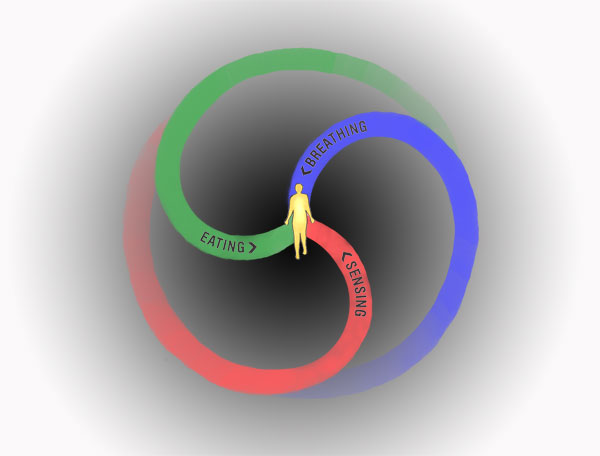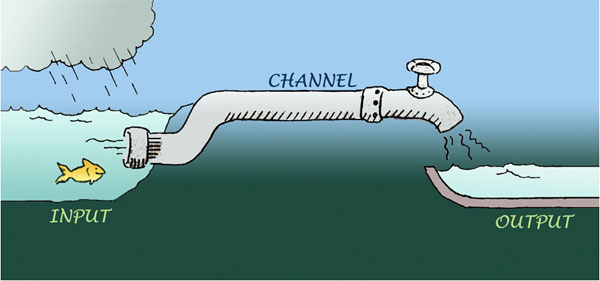Key Concept #3: The Wellness Energy System: Introduction
We are all energy transformers, connected with the whole universe. All our life processes, including illness, depend on how we manage energy.
In 1977, Ilya Prigogene won a Nobel Prize for his theory of dissipative structures. Dissipative structures are open systems in which energy is taken in, modified (transformed), and then returned (dissipated) to the environment. A rock or a cold cup of coffee is a closed system because it does not channel and transform energy in this way. A seed, which constructs a plant from soil, air, and light, is an open system. So is a town, one of Prigogene's favorite examples. In the town, raw materials are converted into other objects by factories. These manufactured goods are then sent out into the world. Information and experience are processed in the town's schools with the end result being educated minds that are then released to make their impact on the world.
A human being is an open system, too. We take in energy from all the sources around us, organize it, transform it, and return (dissipate) it to the environment around us. The underlying theory in this book is that efficient flow of energy is essential to wellness; disease is the result of any interference with this flow. This is true of energy usage in all life processes, from breathing to dying.
Think of yourself as a channel of energy - energy flowing in, coursing around, and flowing out. And because you are different from every other channel" walking around, it goes without saying that your condition (physical, emotional, mental, spiritual) is going to determine how much you take in, what it feels like inside, and how it moves out into the environment. When the flow is balanced and smooth, you feel good. When there is interference at any point - the input, the output, or in between - you can feel empty, confused, pressured, or blocked. Illness is often the result.
The process may be compared to the movement of water through a pipe. The source of the water, the reservoir, constitutes the input. The size and condition of the pipe will determine the flow-through. The water that emerges at the other end - from your faucet, for instance - is the output. Ideally, it is clear, fresh, and free-flowing, as shown.
Now we look at an energy-oriented systems approach for the wellness of human beings, where energy is the analog to water, and your body/mind is the analog of the pipe.
You have at least three major sources for input around you all the time. These are: 1) oxygen, 2) food, and 3) sensory stimulation such as physical touch, heat, light, sound, and other forms of electromagnetic radiation. In addition, there are the less tangible inputs: emotional/spiritual information such as attention, caring, love, enthusiasm, and possibly extrasensory data.

Wellness Energy System: Input



